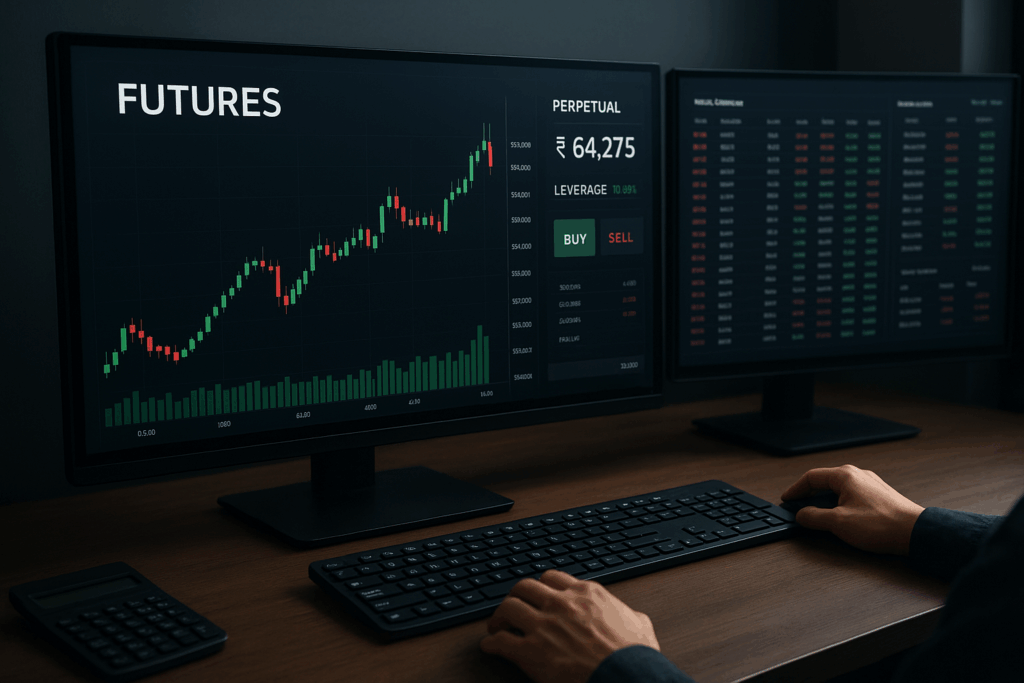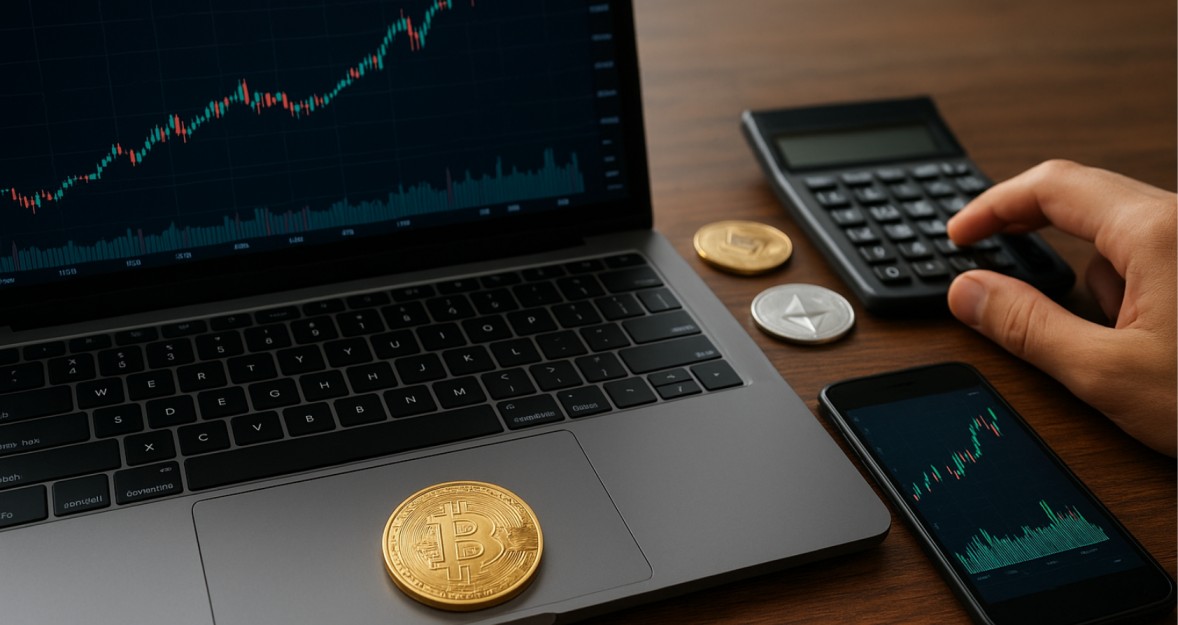The Indian crypto market is experiencing a dramatic transformation. Futures trading—particularly perpetual futures—has rapidly overtaken spot trading to account for 70 to 80 percent of total trading volumes across leading Indian exchanges. This shift is not just a statistic; it reflects a deeper change in trader behavior, regulatory influence, and the evolving structure of India’s digital asset ecosystem.
Why Are Futures Dominating the Market?
The rise of futures trading in India is not accidental. It is the result of several converging factors that make derivatives more attractive than traditional spot trading.
1. Tax Advantages and TDS Exemption
One of the biggest reasons behind the dominance of futures is taxation. Spot crypto trades in India face a heavy burden: a 1% Tax Deducted at Source (TDS) on transactions above ₹10,000, combined with a flat 30% tax on gains. For active traders, these rules make spot trading extremely costly and discourage high-frequency activity.
Futures contracts, however, do not involve the direct “transfer” of a virtual asset, which means they are exempt from TDS. Additionally, the profits are treated under business income taxation, often providing more flexibility than the rigid 30% capital gains tax. For traders, this translates into lower costs and higher net returns.
2. Leverage and Enhanced Capital Efficiency
Futures trading offers leverage ranging from 25× to even 100× on some platforms. This means traders can take large positions with relatively small amounts of capital. While leverage amplifies both profits and risks, it has made futures attractive to those seeking quick gains or hedging opportunities. In India, where many retail traders operate with limited capital, this efficiency makes futures significantly more appealing than spot.
3. INR-Based Margins for Easier Access
Indian exchanges now allow traders to use Indian Rupees (INR) directly as margin for futures positions. Behind the scenes, these exchanges convert INR into stablecoins like USDT by working with global partners, giving traders seamless access to international liquidity pools. This model reduces complexity for retail investors and bridges domestic demand with global markets.
4. Lower Trading Fees
Exchanges have entered a competitive race to attract more futures traders. For instance, some platforms now charge as little as 0.03% on futures trades compared to 0.12% on spot. The difference may seem small, but at scale—especially for high-frequency traders—this makes futures far more economical.
5. Influencer-Led Adoption
An unexpected driver of this boom has been financial influencers. Many influencers who previously focused on stock market derivatives, but faced tighter restrictions domestically, have shifted towards crypto futures. Their large audiences have followed them into this space, accelerating adoption. Exchanges, in turn, have actively partnered with influencers, offering incentives, sponsorships, and exposure.
How Futures Are Reshaping Indian Crypto
The impact of this surge is being felt across the industry in multiple ways:
- Retail Participation
Futures volumes are dominating exchange activity, even though the number of futures traders is smaller compared to spot traders. This shows that active futures traders are executing far larger transactions than casual investors, reshaping the balance of power within exchanges. - Exchange Business Models
For exchanges, the shift toward futures is highly profitable. Derivatives generate higher volumes and, even with lower per-trade fees, lead to significant revenue. The move also helps Indian platforms compete with global giants by offering more sophisticated products. - Regulatory Pressure and Risk Exposure
While tax advantages and ease of access have fueled futures growth, they also raise concerns. High leverage can expose inexperienced traders to massive losses, especially in volatile markets. Without strict regulations, retail investors may be at risk of losing more than they can afford. Regulators are watching this space closely, as unchecked derivatives trading could create systemic issues. - Market Maturation
The rise of perpetual futures—contracts without an expiry date that mimic spot market pricing—shows that India’s crypto ecosystem is becoming more advanced. Traders are increasingly using futures not only for speculation but also for hedging long-term positions, similar to practices in global financial markets.

The Bigger Picture
India’s crypto landscape has always been unique due to its complex mix of regulation, taxation, and high retail participation. The shift toward futures highlights how traders adapt quickly when rules around taxation and transaction costs create inefficiencies in spot markets. By moving to futures, Indian traders are finding ways to stay active while minimizing costs.
At the same time, this trend raises important questions. Should regulators step in to monitor leverage limits? How can exchanges ensure that inexperienced traders are not drawn into reckless positions? And will the futures dominance ultimately reduce spot liquidity, affecting price discovery in the Indian market?
Conclusion
The numbers speak for themselves: crypto futures now make up 70–80% of trading volumes in India. Tax efficiency, leverage, lower fees, and influencer-driven adoption have all played key roles in this transformation. For exchanges, it signals a thriving new revenue stream. For traders, it represents an opportunity to maximize capital efficiency. But for regulators, it is a wake-up call to balance innovation with investor protection.
India’s crypto market is clearly entering a new phase—one where derivatives, not spot trading, define the rhythm of activity. As futures continue to dominate, the story of Indian crypto will be less about simple buying and selling, and more about sophisticated strategies, risk management, and regulatory adaptation.











